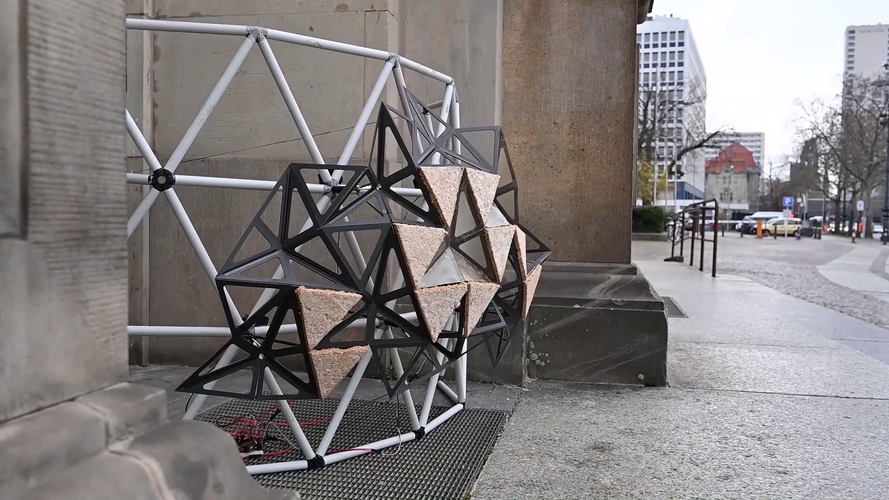Human-Machine-Collab 2021

In our new elective course titled Human-Machine-Collab at the Konstruktives Entwerfen und Tragwerksplanung (KET) (UdK Berlin), we playfully explore computational design methods to conceptualize fresh ideas for future applications, with a focus on human-machine-collaboration and UX design for architecture.
- Sofia Ogarkova
- Chloé Binh-Cirlot
- Chloé Borreguero Boleis
- Pablo Torres
The Urban Streams kinetic facade is an experimental student project for a class on #humanmachinecollab . The team chose to work with urban soundscapes, after consideration that the symphony of complex urban sounds and noises is tremendously undervalued, as we learned to ignore them after in our day to day lives in big cities. The initial idea was to create a meditation pavilion in the middle of that loudness that would become at the same time a tool for sound artists to change human perception of their urban environment. The concept treats the overall mix of noises and sounds of the city as material for sound artists, as a block of marble is for a sculptor, "carving out” all the unnecessary sounds using filter systems that results into a sound-piece we might never have heard before, without adding anything to the existing ambience. In the built prototype of the façade the students tested Ron-Resh origami that opens and closes its modules, depending on the input frequencies coming from the outside: it either confronts the urban context with the self-grown mycelium acoustic material or lets the sound go through sonically porous material on the inner petals of the origami when opened. A fully-built pavilion would be a flexible tool for a sound artist, that can perform different sound-filtering purposes by changing a script for the motion of the motorised umbrella on which the filters are supported.
- Andreas Greiler-Basaldua
- Felix Müller
- Maurice Wald
As the boundaries between analogue and digital reality erode, the computational understanding of human emotion becomes increasingly valuable as data to be extracted, processed and used for profit or control. The processes by which this data is collected by popular services such as Google Photos or social networks tend to occur in the background, leaving the average user unaware of how their personal data is collected and analyzed. ”Out of Touch” is a physical art installation that makes these background processes visible and lets the audience personally experience the algorithms’ accuracy or lack thereof. The installation extracts affect values from the facial expressions in an audience and uses these values to generate a large-format mosaic of similarly labeled imagery scraped from the visual media hosting platform Flickr. Observations drawn for this project may lay the groundwork for future art installations or serve as a standalone artistic approach to examine the relationship between facial tracking technology, affect labeling algorithms and human emotion.
- Jona Carmon
- Kinan Sarakbi
- Julia Ziener
- Tandis Shoushtary
Team Ventus erforschte das Potential reaktionsfähiger No-Tech Materialsysteme zur Filterung von Umwelteinflüssen wie den Windkräften in städtischen Umgebungen. Das Ergebnis ist der gezeigte erste Prototyp, der nur durch Wind angetrieben wird. Mit Ihrer Arbeit testeten die Studierenden die Möglichkeit der Generierung eines Formgedächtnisses von Textilien mittels additiver Fertigung. Hierbei wird ein 2D Muster auf das Textil gedruckt und ermöglicht die Transformation des Textils vom ebenen Zustand in eine 3D Geometrie. Eine integrierte Archimedesschraube zieht die formbewussten Textilien bei Wind flach und entspannt sie wieder in die programmierte 3D-Geometrie wenn keine Windkraft wirkt.